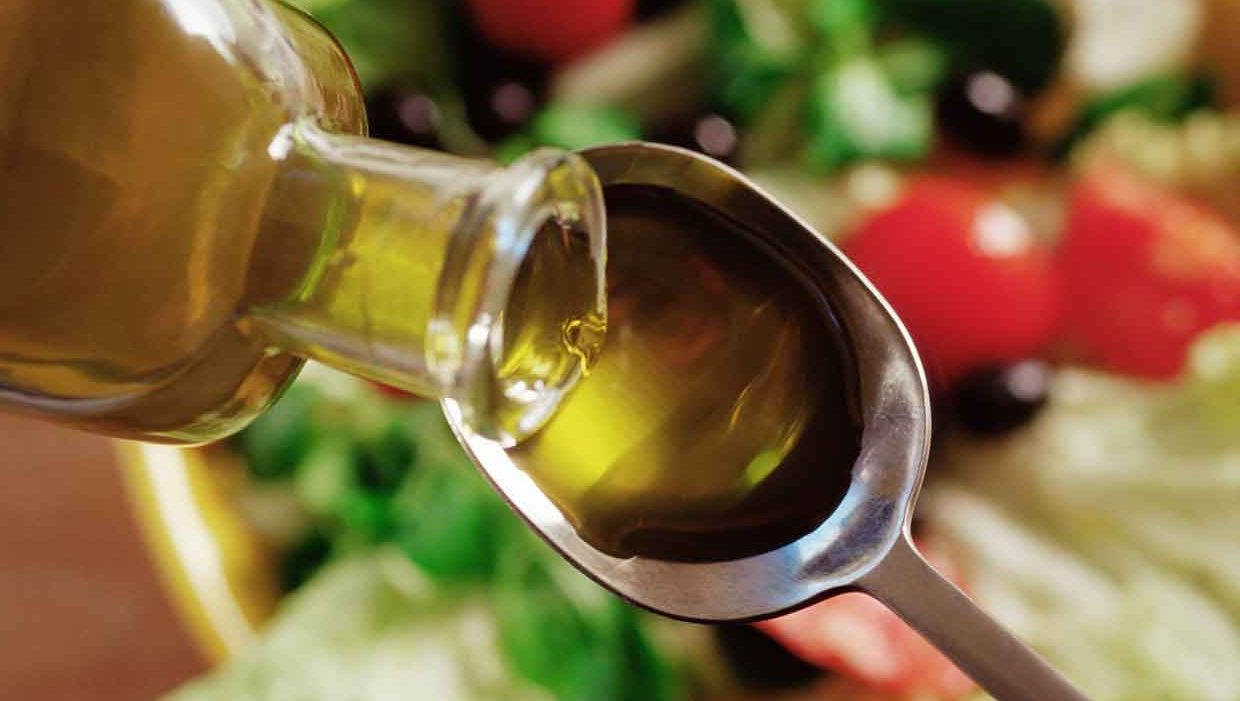How to Pick the Best Olive Oil

Extra-virgin varieties have up to 10 times higher levels of helpful substances. Learn how to pick the best olive oil.
Eating food made with olive oil is clearly good for you, and especially your heart. Yet, you can easily buy olive oil in the supermarket that lacks the key helpful compounds.
YOU MIGHT ALSO LIKE: Why Don’t Americans Eat More Fruits and Vegetables?
Olive oil benefits and side effects
You might balk at the price of the better oils. But this is one health claim that has stood up to multiple tests. To see whether olive oil was important to the health benefits of the Mediterranean diet, one study followed nearly 41,000 Spanish people ages 29 to 69 for more than 13 years, comparing people who ate the most olive oil to those who ate none. It turned out that the high olive oil consumers were 26 percent less likely to die during that period, and 44 percent less likely to die from heart disease.
Must your oil come from Spain? No. A meta-analysis of 42 studies of people around the world found that consuming olive oil reduced the chance of stroke by 17 percent. Other research has found that people who eat olive oil are less likely to become obese.
The secret may be desirable polyphenols, common organic chemicals in vegetables. A polyphenol called “oleuropein,” most plentiful in virgin and extra-virgin oils, is a potent antioxidant, neutralizing the unstable substances called “free radicals” that contribute to disease and aging.
To find an oil rich in this natural ingredient, Brill provides several tips.
“Extra-virgin” oil must be “cold-pressed,” avoiding heat or chemicals that would destroy the polyphenols. The best “extra-virgin” oils have 10 times more of these polyphenols than non-virgin oil, Brill says.
YOU MIGHT ALSO LIKE: Polyphenols in Red Wine, Berries May Advance Cancer Treatment
Best olive oil in the world
Look for olive oil with a label that says it was “produced and bottled” in a particular country. “Produced” is a key word: An oil labeled “Product of Spain” may have been bottled in Spain, but the olives could have been grown or pressed elsewhere. Some fancy oils will tell you where the olives were pressed.
Ideally, you want oils from olives native to Coratina and Moraiolo in Italy, Cornicaba and Picaul in Spain, or Kornoeiki in Greece. Olive trees from these regions have been successfully grown in other parts of the world, but a certification label should make you more confident.
Look for a certification from the International Olive Council, North American Olive Oil Association, California Olive Oil Council, Denominazione d’Origine Protetta, or Protected Designation of Origin. These organizations check for quality.
A dark bottle or can will protect polyphenols from decaying in light.
Best olive oil for cooking
Look for a label with an expiration or best-buy date within 18 months of the day you buy it. If the harvest date is given, it should be within a year. Unlike wine, olive oil does not age well. Use up the oil as quickly as possible once you open a container.
The best oils can run as much as $35 for a 17-ounce bottle. But if you are concerned about heart disease, this is one of the better ways to spend your dollar, says Brill, author of the books “Blood Pressure Down,” “Prevent a Second Heart Attack,” and “Cholesterol Down.” She recommends shopping at high-end specialty stores or online. You’ll often see 375 ml bottles, which are 12.7 ounces, sold for around $17 dollars.
To eat like someone who lives near the Mediterranean Ocean, dunk bread in olive oil and use it for daily cooking. Snack on nuts, seeds, and fruit; eat seasonally fresh and local produce with your main meal; and eat fish, chicken, beans, nuts, and eggs more often than beef or pork.
YOU MIGHT ALSO LIKE: This Diet May Cut Your Alzheimer’s Risk in Half
Updated:
April 09, 2020
Reviewed By:
Janet O’Dell, RN